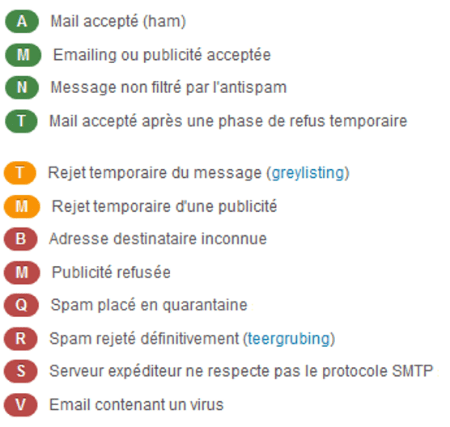Test Altospam’s solutions!
Thousands of companies, CTOs, CIOs, CISOs and IT managers already trust us to protect their e-mail against phishing, spear phishing, ransomware, …

To make logs easier to read and identify, we’ve split the former “Permanent Reject” (P) messages into two distinct categories, both in the various administration, user and reseller interfaces, and in the summary emails. From now on, you’ll find “Quarantaines” (Q) for emails considered spam, but which can be released, and “Mass mailing” (M) for advertising, newsletters or mass emails blocked by the anti-spam system, but which can also be released.
Mass mailing” category (M) is also integrated into accepted and temporarily rejected messages to quickly identify advertisements in logs. We have also created a special category for “Unfiltered” messages. (N). These are either summary emails sent by our servers, or released messages, or emails whose sender has been whitelisted by the recipient (user whitelist only). Unfiltered e-mails still pass through Altospam’s 6 built-in anti-virus programs, simply bypassing the anti-spam filters.
Here’s a summary of the different categories you can find in the logs. Green is for accepted e-mails (return code 200), orange for temporarily rejected messages (return code 400) and red for rejected e-mails (return code 500).
In addition, the system for sending summary emails has been completely redesigned to be much faster and more flexible. This will enable us to offer you new options in a few months’ time in the new interface. We were able to reduce the processing time for these emails by a factor of 10, so that they were all sent overnight.
We’ve been using anti-ddos mechanisms on emails for years. They enable us to block massive attacks, whether they originate from a single server or multiple infected machines. These systems focus on the advertised sender, the sending IP and the subject of the e-mail. To make it easier to understand the logs, if emails have been blocked by one of the anti-dos systems, this now appears clearly in the logs.
Test Altospam’s solutions!
Thousands of companies, CTOs, CIOs, CISOs and IT managers already trust us to protect their e-mail against phishing, spear phishing, ransomware, …